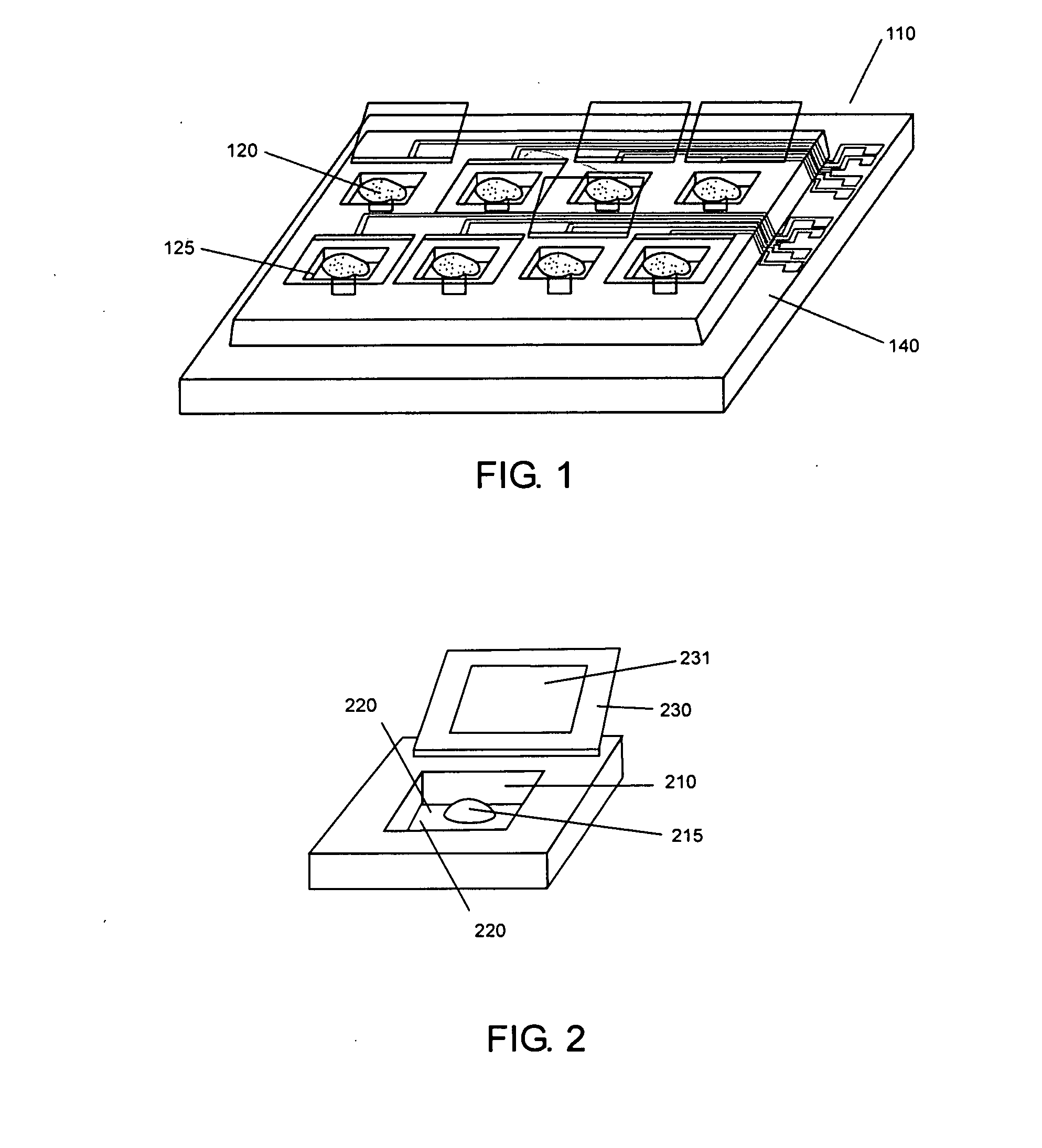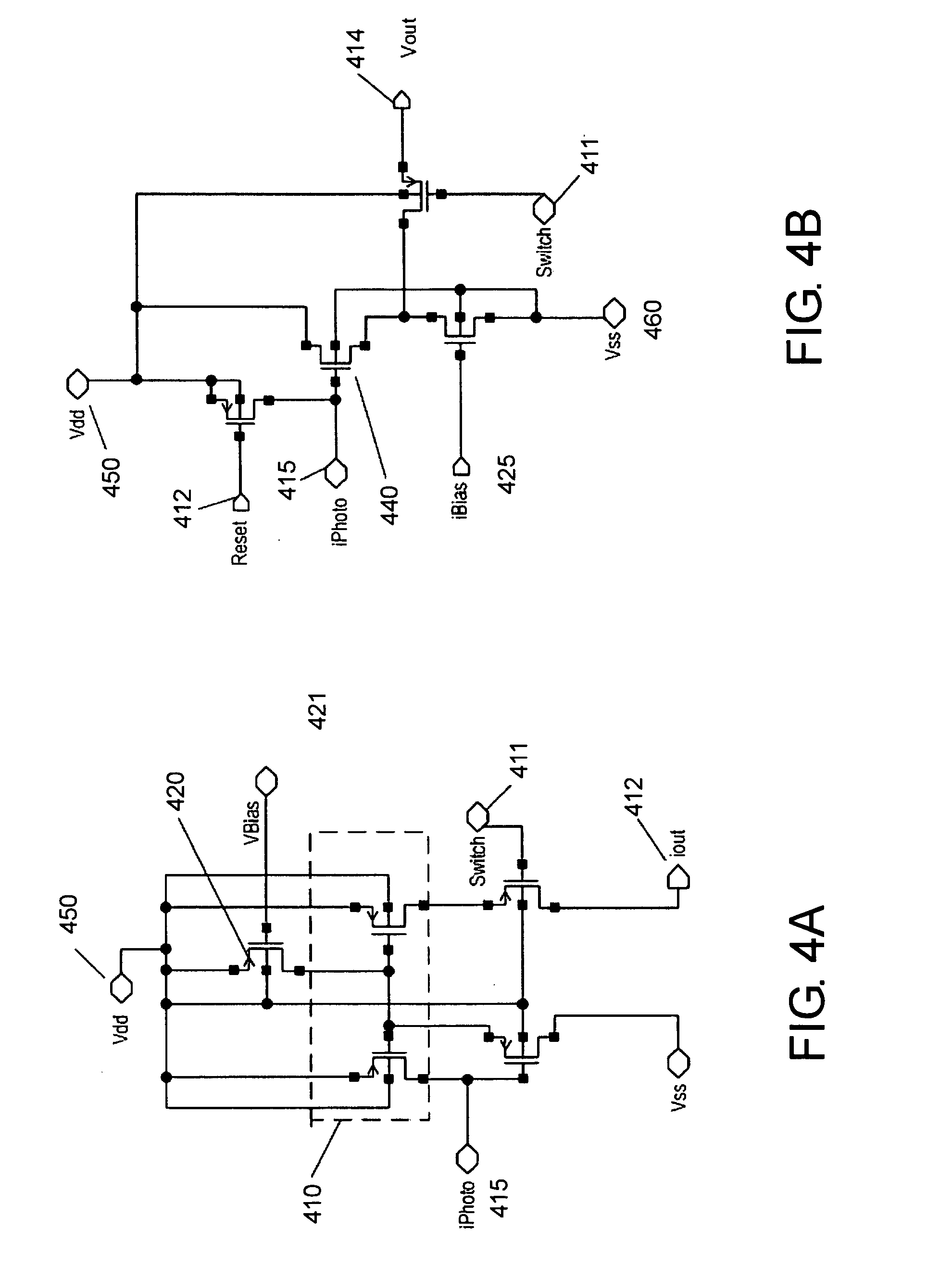Cell canaries for biochemical pathogen detection
a biochemical and cell technology, applied in the field of apparatus for pathogen detection and methods of detecting pathogens, can solve the problems of biochemical pathogen detection plagued by false positives, unacceptably high false positive rate, and test just barely more useful than no test at all
- Summary
- Abstract
- Description
- Claims
- Application Information
AI Technical Summary
Benefits of technology
Problems solved by technology
Method used
Image
Examples
example 1 integrating
MEMS Structures and CMOS Circuits for Bioelectronic Interface with Single Cells (an Example of a Cell Clinic)
[0153] Microvials 100 μm×100 μm and 10 μm to 20 μm high were made of SU-8 negative photoresist. The microvials were closed by SU-8 / gold lids that were positioned by bilayer polymer actuators of PPy and gold. The clinics were fabricated on silicon wafers with electrodes leading to the hinges and to the interior of the vials. These structures have also been fabricated on top of custom VLSI circuitry designed to record signals from the cells within individual vials. All fabrication steps are performed at low temperature and are compatible with post-processing of the fabricated silicon die.
[0154] Because cells can escape from even deep microvials, a lid is included that can be closed after loading the cells into the vials. PPy doped with dodecylbenezenesulfonate (PPy(DBS)) is deposited over a layer of gold, which acts as the electrode through which potentials are applied as well...
example 2
CMOS Fluorescence Sensor Design and Results
[0163] Fluorescence detection is a mature technology commonly found in microscopy and spectroscopy systems and widely used in biology labs worldwide. Such systems are typically large and require laboratory infrastructure for operation. In this work, the fluorescence sensor has been miniaturized for integration into the cell clinics vials for monitoring cells in real-time.
1. Design
[0164] For the fluorescence sensor, the primary design constraints were sensitivity and spectral selectivity. Fluorescence from the specimen in each cell clinic was expected to be weak (normally 10−4˜10−8 fc (footcandle), and 10−6 fc corresponds to 4.6 photons / 100 μm2 / s) (Herman, 1998). Though collection efficiency for the fluorescence signal was expected to be somewhat more efficient than in normal fluorescence microscopes due to the lack of intermediary optics, the extreme weakness of fluorescence still posed a substantial challenge in the development of an in...
example 3
CMOS Capacitance Sensor for Cell Proximity Detection
[0167] Capacitance measurements are commonly used for applications such as fingerprint sensing, position sensing and interconnect characterization. In this work, the technique was adapted to cell proximity detection for evaluating the surface adhesion properties of living cells in cell clinics.
1. Design
[0168] A custom CMOS capacitance sensor for cell proximity detection has been designed using the topology shown in FIG. 6 (Lee et al., 1999). The physical principle underlying operation of the sensor is charge sharing. The coupling capacitance Ccell is formed by the series combination of the capacitances between the cell and the passivation layer and between the passivation layer and the topmost metal electrode. Ccell varies-with the strength of coupling of the cell to the chip surface.
[0169] The sensor circuit had two nodes, N1 and N2, with parasitic capacitances CN1 and CN2. Charging and discharging of these nodes were controll...
PUM
| Property | Measurement | Unit |
|---|---|---|
| fluorescence | aaaaa | aaaaa |
| fluorescence resonance energy transfer | aaaaa | aaaaa |
| mechanical | aaaaa | aaaaa |
Abstract
Description
Claims
Application Information
 Login to View More
Login to View More - R&D
- Intellectual Property
- Life Sciences
- Materials
- Tech Scout
- Unparalleled Data Quality
- Higher Quality Content
- 60% Fewer Hallucinations
Browse by: Latest US Patents, China's latest patents, Technical Efficacy Thesaurus, Application Domain, Technology Topic, Popular Technical Reports.
© 2025 PatSnap. All rights reserved.Legal|Privacy policy|Modern Slavery Act Transparency Statement|Sitemap|About US| Contact US: help@patsnap.com



